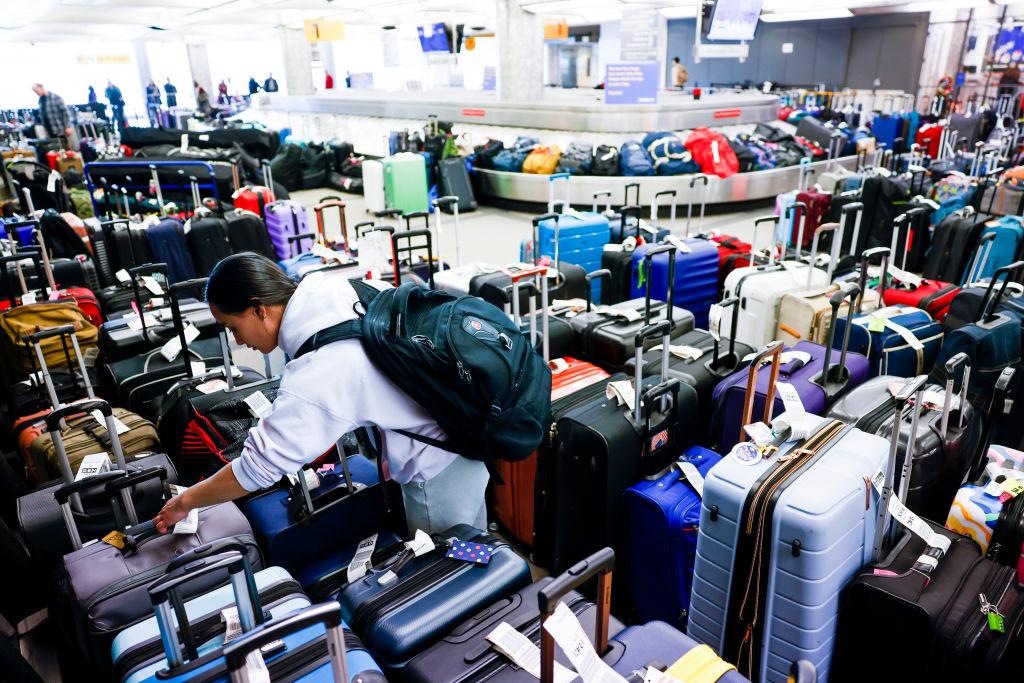Daily Memo: United Airlines' Marketing Campaign Against LCC Competitors Carries Risk

Regular travelers from Denver International Airport, the epicenter of Southwest's holiday meltdown, are the target of a United Airlines TV commercial to run during the Super Bowl.
United Airlines has chosen to make Southwest Airlines’ recent holiday meltdown, which began at Denver International Airport and catastrophically rippled through the system, the subject of a TV spot premiering during the Super Bowl broadcast Feb. 12.
The commercial is the latest salvo in United’s shade-throwing against beleaguered Southwest at the LCC battleground airport, but analyst Robert Mann cautions that the competitive schadenfreude of openly criticizing a competitor’s operations could backfire.
The advertisement, targeted to the local Denver and Colorado Springs markets, depicts families reuniting at an airport over the holiday season with what appears to be actual home video footage. The on-screen graphic reads, “United got more families in and out of Denver than any other airline.” And then, in a thinly veiled reference to Southwest’s holiday turmoil, adds, “... despite the weather.”
In a Feb. 7 press briefing, Josh Earnst, United’s chief communications officer, said the messaging draws a sharp distinction between United and its LCC competitors. “There are many different reasons that our customers choose an airline, and price is certainly one of those factors—we believe that there are other factors that should weigh on that decision, like operational reliability,” said Earnst, who delivered the bulk of the presentation as a proxy for United’s senior leadership team.
Mann says, “CEOs tend to talk their book often without regard for ‘oops’ what may come back to haunt them in other areas.” The analyst notes that all airlines—even the resurgent United, now years past the notorious Dr. Dao debacle—have their issues.
“Recall that United had a [Boeing] 777 engine nacelle loss [over Denver] and fleet grounding within the past few years, unrelated to the FAA’s proposal to fine [United] for flying its 777 fleet for several years without proper pre-flight checklist tests of their engine fire-warning systems,” Mann says.
He suggests people who live in glass houses like the imperfect airline industry should exercise caution before casting stones. “One has to have clean hands to do this sort of work,” he cautions.
United’s marketing has taken direct potshots at Southwest in Denver over the last two years. Still, this latest effort appears to be part of a bigger, concerted strategy of casting aspersion on the broader low-cost sector. United CEO Scott Kirby previously said the rival business model was “doomed,” saying on an earnings call last October that it is “a Ponzi scheme because it is predicated on growing 15-20% a year.”
During the Feb. 7 presentation, United showed a series of charts which its says demonstrated its operational superiority to others over the holiday period. It claimed that nationwide, United and its primary hubs were most impacted by weather at 36%. Yet, it had the least scheduled flight cancellations of any of its competitors at 9%—save American Airlines and JetBlue. Frontier Airlines, Spirit Airlines and especially Southwest were singled out for much higher cancellation rates, despite, United claims, having less exposure to bad weather.
In Denver, United lauded its low cancellation results compared to its LCC competitors, saying they were all subject to the same weather conditions at the same airport. “What you see is that their [the LCCs] operational performance is noticeably worse,” Earnst said. United’s data showed a mere 5.5% of canceled flights between Dec 18, 2022, and Jan 5, 2023, compared to Frontier at 7.5%, Spirit at 10.4% and Southwest’s stratospheric 27.4%
“The success of United’s performance in this period wasn’t because of any single thing that we did. The success was really rooted in investments that we made,” said Earnst. The laundry list of investments includes technology and infrastructure upgrades; increased spare aircraft; stepped-up hiring; and even dispatching employees from around the system to stressed stations like Denver.
To illustrate his argument about this not just being a one-off black swan event that the competition could recover from and move on, Earnst said: “At the end of the holidays, our biggest competitors were eager to say ‘They got the operations stabilized … and that the problems were solved’... But, once the weather began to deteriorate again in early January, you see a pretty stark disparity between their [worse] operational performance [and United’s].”
Kirby has taken a vocal stance in the post-pandemic phase of U.S. airline operations, saying there needs to be a complete rethink rather than not a return to the 2019 status quo. “The FAA and most airlines, with the exception of network carriers, have outgrown their technology infrastructure and simply cannot operate reliably in this more challenging environment,” Kirby said during United’s fourth-quarter earnings call in January. “[We are] the only airline that has figured this out,” Kirby added.


